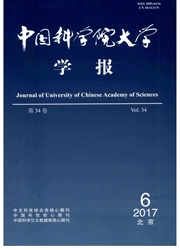

 中文摘要:
中文摘要:
采用PCR—DGGE方法,研究添加0.25%林肯霉素及0.1%、0.2%和0.3%的半乳甘露寡糖(GMOS)对断奶仔猪肠道微生物多样性的影响.结果表明,结肠微生物DNA电泳条带的数量明显多于回肠中的数量;断奶后0d的回肠条带数量多于断奶后14d的数量,但两者间结肠微生物种类差异不大.唾液乳酸杆菌、瘤胃球菌和大肠杆菌为仔猪回肠共有菌;而金色葡萄球菌、唾液乳酸杆菌、瘤胃球菌、枯草芽孢杆菌和产气英膜梭状芽孢杆菌是结肠的共有菌.由相似性分析可见,各日粮处理间电泳带谱之间相似性较低,除了对照组和0.2%GMOS组断奶仔猪回肠微生物各带谱间存在80%的相似性外,其他各组的回肠微生物各谱带间的相似性大部分在20%~50%之间.这表明饲喂不同日粮的断奶仔猪,其肠道相同微生物种群数量相同者较少,各自特有的微生物种群数量较多.
 英文摘要:
英文摘要:
Effect of galactomannan oligosaccharides (GMOS) on intestinal microglora and bacterial community in newly-weaning pigs by denaturing gradient gel electrophoresis (DGGE) analysis of 16S ribosomal RNA. Lincomycin and GMOS included in the diet appeared control diet. There were more DNA bands to have changed PCR-DGGE profiles of cecal microbiota compared to the of colonic microbiota than that of ileal microbiota, and the DNA bands of day 14 were more than that of day 0 post-weaning in ileal, but the bands of day 14 were as much as that of day 0. There were some same bands among different lanes, and it meant that Lactobacillus salivarius, Ruminococcus forques and E. coli 0517:H7 existed in every treatment in ileal but Staphylococcus aureus, Lactobacillus salivarius, Ruminococcus forques, Bacillus subtilis and Clostridium perfringens in colon and the different bands showed that each had different microbiota. Similarities between DGGE profiles most were 20% - 50%, except that of control and 0.2% GMOS in ileal were 80%. It meant that each treatment had its own microbiota profiles.
 同期刊论文项目
同期刊论文项目
 同项目期刊论文
同项目期刊论文
 期刊信息
期刊信息
